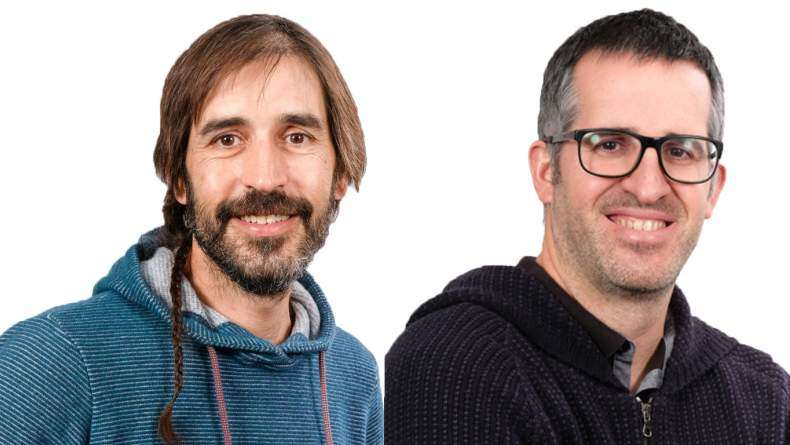Invited speakers at 5th Zing Bionanomaterials Conference

María Luisa Fernández-Gubieda is one of the invited speakers at 5th Zing Bionanomaterials Conference on April 26th (9:50) in Carvoeiro, Portugal.
Hyperthermia response and citotoxity studies of magnetite nanoparticles from Magnetospirillum gryphiswaldense
Magnetotactic bacteria are microorganisms that have the ability to align and navigate along the geomagnetic field lines due to the presence of a chain of magnetic nanoparticles covered by a lipid bilayer membrane, called magnetosomes. The type of magnetic nanoparticle, the shape and size of the magnetosomes depend on the species of magnetotactic bacteria. In particular, the bacterium Magnetospirillum gryphiswaldense MSR-1 produces magnetite, Fe3O4, cubo-octahedral shaped nanoparticles with an average size diameter of 45 nm and covered by a lipid bilayer membrane of around 2-4 nm [1]. These nanoparticles are single domain in ferrimagnetic regime, present high crystallinity and narrow size distribution, so they are especially interesting for biomedical applications especially in hyperthermia treatment. In this presentation, we will provide a detailed study of the mechanism of heat production by magnetosomes. We have measured the specific absorption rate (SAR) by AC magnetometer at selected frequencies and as a function of applied magnetic field, up to 30 kA/m. It is well known that for a ferrimagnet single domain nanoparticle two main mechanism are involved in the heating process. The first one it is due to the intrisic hysteresis losses of the ferrimagnet nanoparticle and the second one it is due to the physical rotation of the nanoparticle in a magnetic field, Brownian motion. In order to determine the role of each mechanism in the final SAR value, we compare the heating rates of the magnetosomes suspended in liquid medium, in which rotation of the magnetosomes must be taken into account and in gel where rotation is limited. The experimental data are compared with numerical calculations based on dynamic Stoner-Wolhfarth model. Finally, we have performed a citotoxicity study of the magnetosomes on macrophages cells. You can download the conference programme here.Related news
María Calles, nueva doctora de BCMaterials
Queremos felicitar a María Calles García por haber obtenido su doctorado en Ciencia y Tecnología de Materiales por la UPV/EHU. El 4 de diciembre María realizó una brillante defensa de su tesis...Charla invitada con investigadores del Instituto de Microelectrónica de Barcelona (3 de diciembre)
El próximo 3 de diciembre, a partir de las 12:00 en el auditorio Martina Casiano de Leioa, BCMaterials recibirá a los investigadores titulares del Instituto de Microelectrónica de Barcelona (IMB-CNM...Charla invitada con Liu Yao sobre baterías de metal-litio (2 de diciembre)
El próximo lunes 2 de diciembre, Liu Yao, profesor del Shanghai Institute of Applied Physics presentará una charla invitada en BCMaterials titulada ‘Li Metal Batteries: From Liquid to Solid-State’....Éxito del workshop anual de BCMaterials, dedicado a materiales críticos
La exitosa edición 2025 del workshop anual de BCMaterials reunió el pasado 19 de noviembre en Leioa a un centenar de asistentes para examinar el estado del arte y debatir sobre los materiales...



